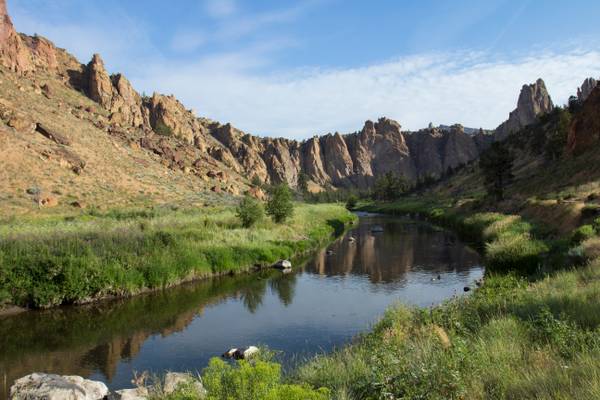United States » Oregon »
Smith Rock and Crooked River, Oregon

0
Smith Rock State Park is an American state park located in central Oregon's High Desert near the communities of Redmond and Terrebonne. Its sheer cliffs of tuff and basalt are ideal for rock climbing of all difficulty levels. Smith Rock is generally considered the birthplace of modern American sport climbing, and is host to cutting-edge climbing routes. It is popular for sport climbing, traditional climbing, multi-pitch climbing, and bouldering.
The geology of Smith Rocks is volcanic. It is made up of layers of recent basalt flows overlaying older Clarno ash and tuff formations. Approximately 30 million years ago, a large caldera was formed when overlying rock collapsed into an underground lava chamber. This created a huge amount of rock and ash debris that filled the caldera. That material solidified into rock, becoming Smith Rock tuff. Rhyolite flows intruded along faults in the Smith Rock Tuff. A half million years ago, basalt lava flows from nearby volcanoes covered the older tuff.
More recently, the Crooked River cut its way through the layers of rock to create today's geographic features. Smith Rock itself is a 3,200-foot (980 m)-high ridge (above sea level) with a sheer cliff-face overlooking a bend in the Crooked River (elev. 2600 ft), making the cliffs about 600 feet high